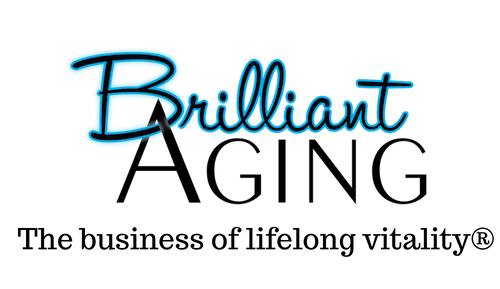What's Your Vitality Plan For Your 60s and Beyond
Building financial security and staying healthy are consistently listed as top aging concerns for adults over 55.
Most of us know that creating a financial portfolio (make a plan, balance assets, make regular deposits) is important to ensure lifelong financial security.
But what about your vitality? Do you have a plan?
Using the familiar structure of a financial portfolio, the Vitality Portfolio® strategy encourages you to create a practical roadmap for lifelong health. Make a vitality plan, balance vitality assets (functional, core, and wellness assets), and make regular deposits.
Planning
How long do you expect to live? I ask this question during keynote speeches and people always seem to have a number in their head. In future blog posts (Aging – It’s a Family Affair), we’ll explore how people come up with it.
For now, consider your number – and more importantly, consider what you want to be able to do through your 60s, 70s, 80s, 90s and 100s! Making a vitality plan helps you set, track and reach your goals.
Functional Assets
Strength, mobility and endurance are “mission critical” assets for maintaining independence. Yet optimizing function through physical activity is the most underused healthy aging strategy available today! It’s easy to disregard functional changes that happen gradually, so here’s some food for thought.
Statistics don’t motivate action unless they’re personally relevant. For example: Strength declines approximately 1-1.5% per year after about age 30. That doesn’t sound like a lot until you do the math. If you’re not regularly challenging your strength, you’re losing it – on average that’s about 60% by age 70 and 75% by age 80.
Imagine going about your daily life carrying a backpack filled with your body weight (i.e., half the strength requires double the effort). Consider how difficult daily tasks would become, and how many activities you would have to give up.
Physical frailty is common and predictable with age, but it’s not due to age nor is it inevitable. Studies show that even over-90-year-olds can prevent and reverse the loss of muscle mass and strength with resistance training.
Take Charge!
If you get fatigued while walking – walk more! If you’re having trouble rising from a chair, do it more; every time you sit down, stand up and sit down three more times. See how many knee lifts you can do during TV commercial breaks or commit to standing up and sitting down 5-10 times during each commercial break.
To maintain the gift of mobility, gently stretch and move your muscles and joints through every range of motion. Embrace cardiovascular exercise to help your heart, lungs and blood vessels deliver oxygenated blood throughout the body.
Endurance activities bathe your brain in oxygenated blood which means that they are also closely linked to brain health! Get out and move briskly every day.
Walk, swim, dance, or even do seated exercises that elevate your heart rate – toe touches, heel presses, knee lifts, low kicks, marching in place – all with arm swings. Several simple downloadable movement programs are available on my website.
Age is not a diagnosis, so it’s only beneficial to confront functional challenges with physical therapy intervention. Consciously invest in lifelong functional independence.
Core Assets: Ageless Thinking and Resilience
Attitudes and expectations directly impact aging. Engage Ageless Thinking by consciously rejecting all negative expectations you may have of aging. Activate Resilience
by embracing adaptive strategies to overcome challenges – regardless of age.
30 years ago, people with disabilities were often institutionalized with no expectations or opportunities, and outcomes were bleak. The disability movement changed attitudes and expectations and literally transformed lives. Now young people with profound disabilities are given resources, tools and encouragement to overcome and live fully in spite of challenges – and they accomplish astonishing things!
Unfortunately, attitudes haven’t changed much for adults who face physical or cognitive disabilities later in life. They most often receive resources, tools and support to cope with disabilities.
There’s a profound difference in mindset between coping and overcoming – resulting in profoundly different outcomes. If you’re facing a challenge, take age out of the equation, embrace adaptive strategies, and insist on pursuing the fullest recovery possible.
Wellness Assets
Visualize the six dimensions of health – physical, social, emotional, intellectual, spiritual and vocational – as spokes on a wagon wheel. Consider how many deposits you regularly make into each dimension (spoke), and then draw your Wellness Wheel.
Are some “spokes” large (carrying most of the load) while others barely exist? Are you missing an entire “spoke”? It takes conscious effort to balance wellness assets across the body, mind and spirit.
Don’t leave your vitality to chance! Make a plan, balance your assets, and make regular deposits into lifelong vitality. Visit my website for a downloadable Vitality Portfolio® tool-kit to get you started.
Do you have a plan? Have you considered what “assets” you need to support lifelong vitality? Please share your thoughts in the comments below!
Let's Have a Conversation!

